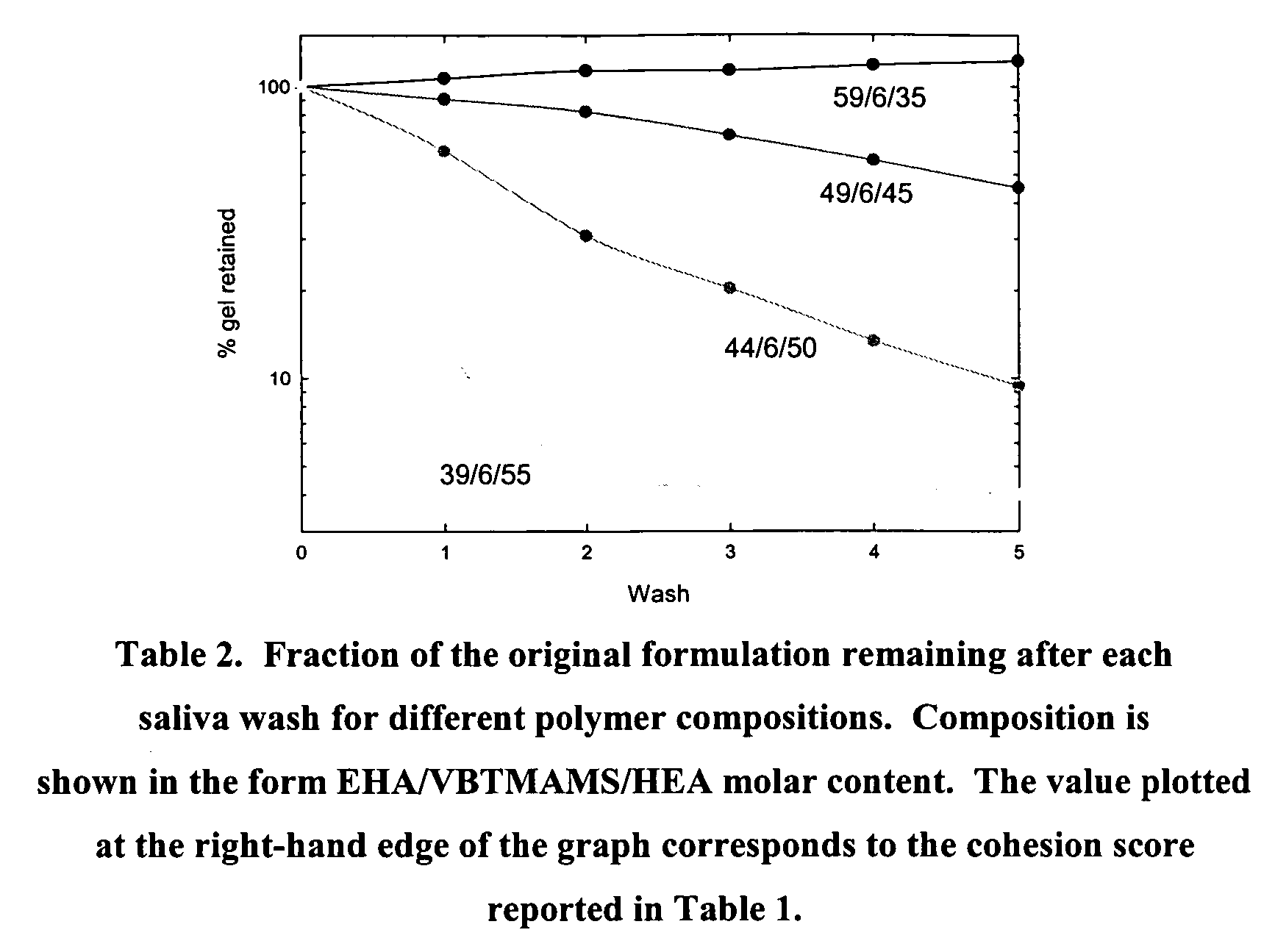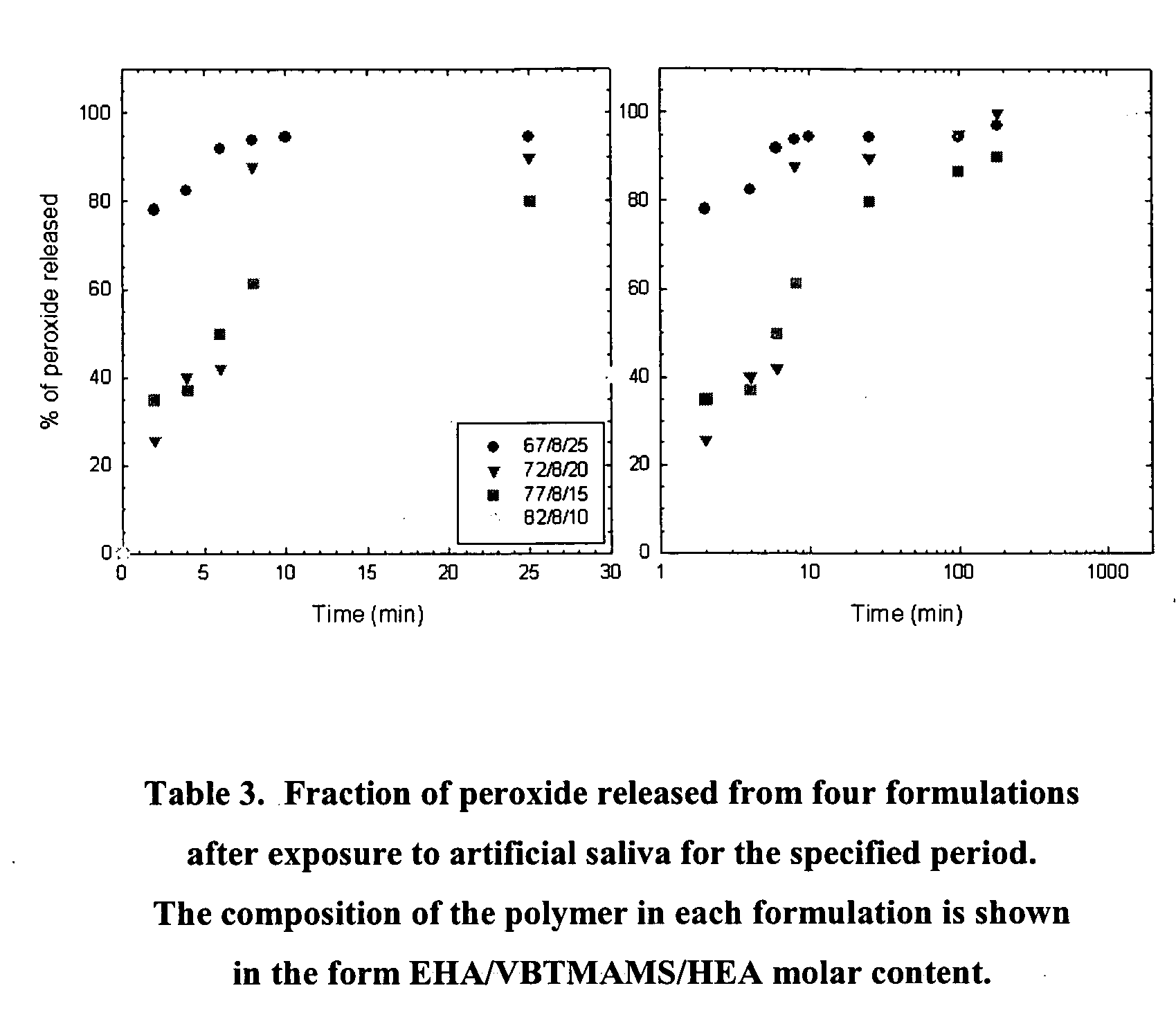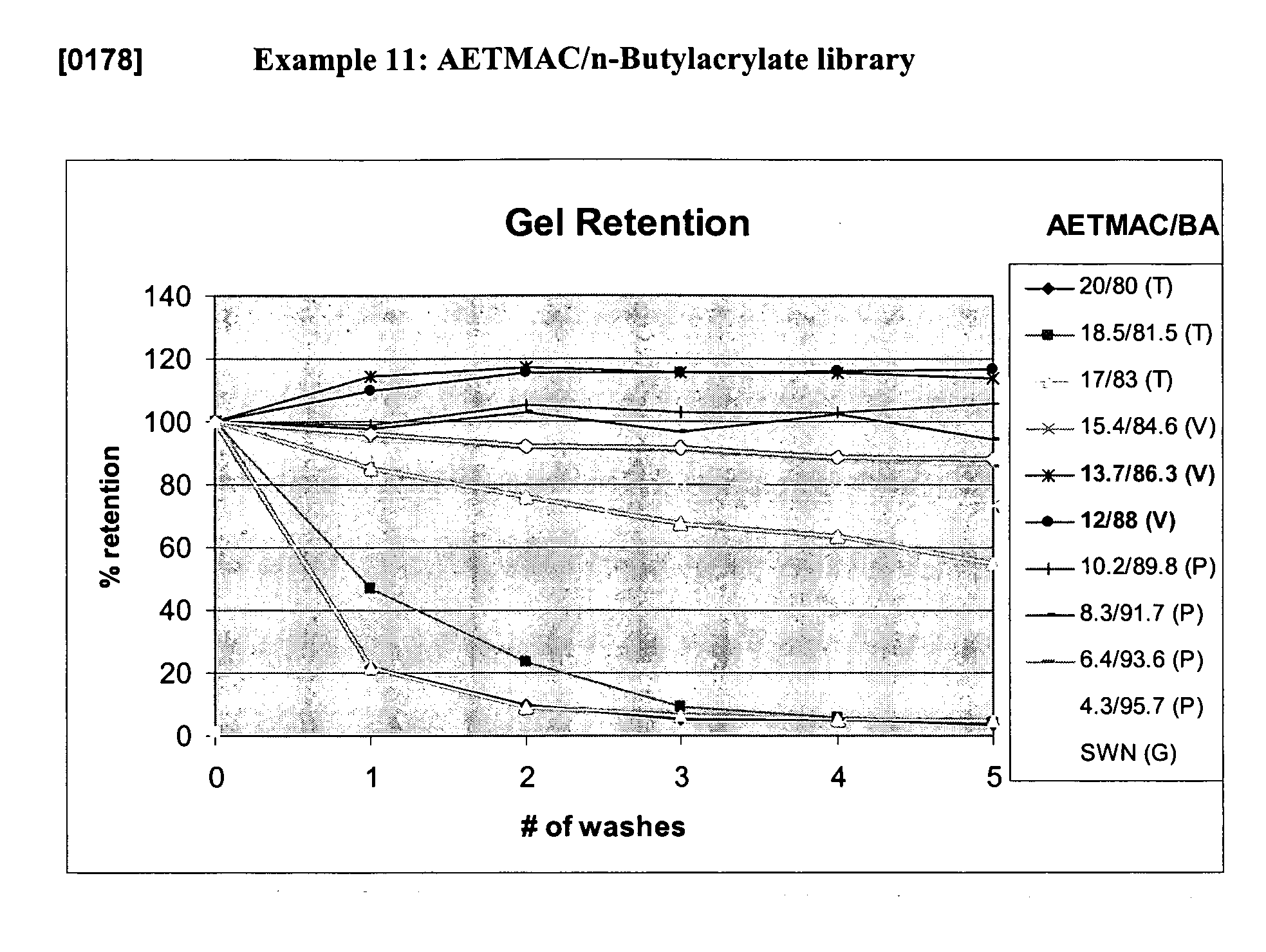Materials for enhanced delivery of hydrophilic active agents in personal care formulations
a technology materials, which is applied in the field of enhanced delivery of hydrophilic active agents in personal care formulations, can solve the problems of socially objectionable, discolored, or unhealthy teeth, dull teeth, and discoloration of teeth, and achieves the effects of reducing the number of people who have a bad tooth, and improving the appearance of teeth
- Summary
- Abstract
- Description
- Claims
- Application Information
AI Technical Summary
Benefits of technology
Problems solved by technology
Method used
Image
Examples
example 1
Molar Feed Ratio: 89.88% BA, 10.12% AETMAC
[0116] In a reaction vessel can be added 2.48 ml of DMF, 0.195 ml of solution a, 0.043 ml of solution b, and 0.46 ml of solution e. The reaction can then be heated at 80° C., and while stirring are added simultaneously during 2 hours in a semi-continuous way 0.292 ml of solution a in 10 equal portions, 0.389 ml of solution b in 100 equal portions, and 4.14 ml of solution e in 100 equal portions. After the addition is complete the mixture can be kept at 80° C. for one more hour and then can be cooled down to room temperature. The mixture can be concentrated by rotatory evaporation and the residue can be redissolved in a minimum amount of ethanol. The polymer can then be precipitated in excess hexane. The oil formed can be decanted and dried under vacuum.
example 2
Molar Feed Ratio: 88.07% HA, 11.93% AETMAC
[0117] In a reaction vessel can be added 2.48 ml of DMF, 0.195 ml of solution a, 0.043 ml of solution b, and 0.46 ml of solution c. The reaction can then be heated at 80° C., and while stirring are added simultaneously during 2 hours in a semi-continuous way 0.292 ml of solution a in 10 equal portions, 0.389 ml of solution b in 100 equal portions, and 4.14 ml of solution c in 100 equal portions. After the addition is complete the mixture can be kept at 80° C. for one more hour and then can be cooled down to room temperature. The mixture can be concentrated by rotatory evaporation and the residue redissolved in a minimum amount of ethanol. The polymer can then be precipitated in excess hexane. The oil formed can be decanted and dried under vacuum.
example 3
Molar Feed Ratio: 80.72% BA, 10.19% DMA, 9.09% AETMAC
[0118] In a reaction vessel can be added 2.45 ml of DMF, 0.198 ml of solution a, 0.04 ml of solution b, 0.425 ml of solution e and 0.04 ml of solution f. The reaction can then be heated at 80° C., and while stirring are added simultaneously during 2 hours in a semi-continuous way 0.297 ml of solution a in 10 equal portions, 0.360 ml of solution b in 100 equal portions, 3.825 ml of solution e in 100 equal portions, 0.360 ml of solution f in 100 equal portions. After the addition is complete the mixture can be kept at 80° C. for one more hour and then can be cooled down to room temperature. The mixture can then be concentrated by rotatory evaporation and the residue can be redissolved in a minimum amount of ethanol. The polymer can then be precipitated in excess hexane. The oil formed can be decanted and dried under vacuum.
PUM
| Property | Measurement | Unit |
|---|---|---|
| weight % | aaaaa | aaaaa |
| weight % | aaaaa | aaaaa |
| weight % | aaaaa | aaaaa |
Abstract
Description
Claims
Application Information
 Login to View More
Login to View More - R&D
- Intellectual Property
- Life Sciences
- Materials
- Tech Scout
- Unparalleled Data Quality
- Higher Quality Content
- 60% Fewer Hallucinations
Browse by: Latest US Patents, China's latest patents, Technical Efficacy Thesaurus, Application Domain, Technology Topic, Popular Technical Reports.
© 2025 PatSnap. All rights reserved.Legal|Privacy policy|Modern Slavery Act Transparency Statement|Sitemap|About US| Contact US: help@patsnap.com



